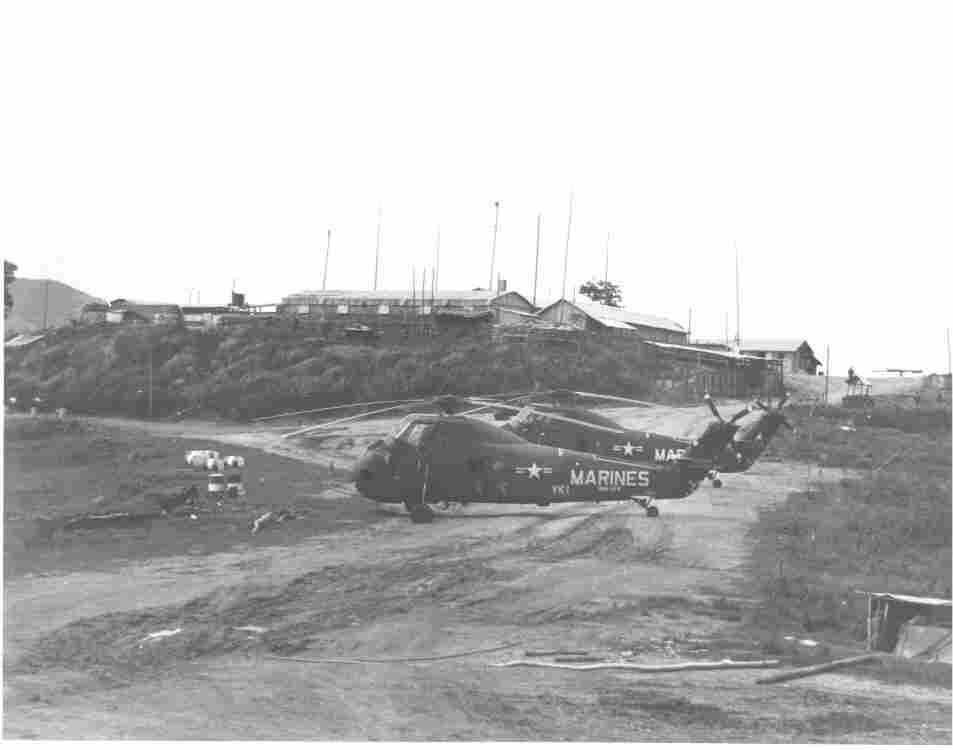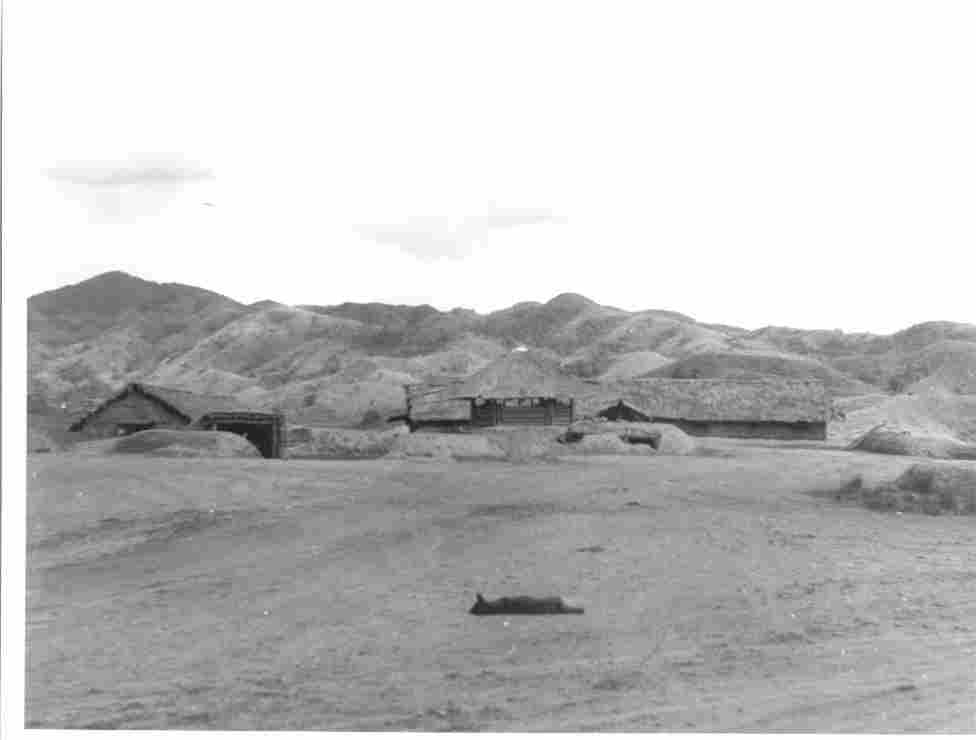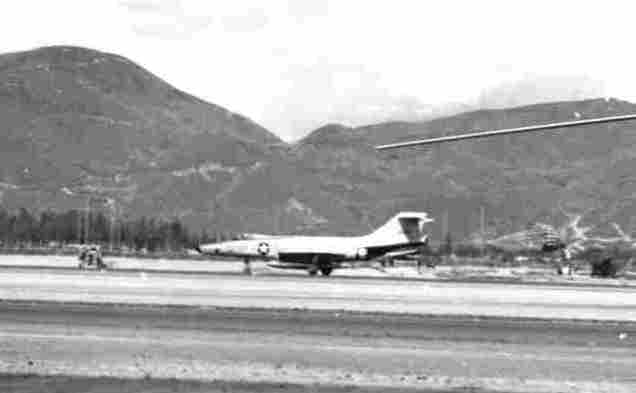 |
Early the morning of June 7, 1964 air crews were awakened to prepare for the possible rescue of Navy Lt. Charles F. Klausmann whose F8U Crusader had been shot down in the Plain of Jars the preceding day in an area between Khang Khay and Ban Ban which had become known as "Lead Alley".
Warren R. Smith recalls, "I remember being awakened early one morning for a special flight and all I was told was to get it in gear and go to the flight line. I remember telling the individual that woke me that I already had my missions for the month and maybe someone else would like to go. I was then informed that all the crews had been specifically selected by name and not to waste any time getting to the flight line. I seem to remember when I arrived at the flight line some of the sheet metal guys were using black paint to make the two aircraft scheduled for the mission more difficult to identify. We commenced to load 55 gallon drums of 115/145 avgas, extra oil, pack packs, extra ammunition and hand grenades, weapons, c-rations and water. Still there had been no destination indicated when the heavily loaded helicopters struggled into the air and headed north from Da Nang.
We stopped at Phu Bai to see if we could top off
with fuel, but we were early and none of the fuel farm personnel were around.
We could not get the pumps started but attempted jumping up and down on
the rubber fuel bladders in an attempt to force fuel into our choppers.
We then flew on to the nameless USAF communications station pictured below
which was located in the upper Northwest corner of South Vietnam close
to the borders of both North Vietnam and Laos. This communication
station was quite sensitive and was guarded by a Marine detachment as well
as ARVN troops. I believe it was monitoring reconnaissance flights
into North Vietnam and Laos. However, these pictures were not taken
on the day of the mission described herein.
 |
 |
After arriving we were briefed on Lt. Klausmann's situation and that the communication station was still monitoring his emergency radio and at anytime we might be given orders to attempt to rescue him. We were advised that we did not have enough fuel to get to him and return. Therefore, if we located Klausmann, we were to proceed toward Thailand until our fuel was exhausted, abandon our choppers in Laos and continue on foot to the Thai border. All the extra gear in the aircraft now began to make sense. We unloaded the avgas cranked the fuel in by hand as we rocked the helicopter from side to side. Every gallon of fuel in the tank reduced the distance we would ultimately have to walk.
The thing that kept bothering me was this F8U that did about 1,500 mph across the deck had been shot down by quad mounted radar controlled AA guns. What would they do to a 130 mph UH-34? We were going to fly low under their electronic sight as long as we could and use the element of surprise to save us. It was a long day of waiting and I started a 20 year habit of smoking that day. It was finally decided we already had one pilot down in an area that we were not supposed to be in and having a number of rescue choppers and their associated crews down along the way would complicate the current issue. We were told that Air America would attempt the rescue from Thailand and we were released to return to Da Nang.
A number of Air Force squadrons made up of RF-101
Voo Doos and RF-102 Delta Daggers were used to take photos with all being
kept in secret at the south end of the Danang runway. The following
picture is an F-101 Voo Doo photo reconnaissance airplane returning from
a mission to the North and relates to the USAF communications base we had
just returned from.
 |
Their squadron area was remote at the end of the Da Nang runway and they did not socialize with the rest of us locals. I also remember that shortly after we returned to Da Nang six F-100 Super Sabers showed up out of nowhere to refuel and add six 1,000 lb. bombs to their wing racks down at the Air Force encampment. I remember we all lined up along the runway and cheered them as they took off. They made a sharp left turn out over the harbor and were gone for about an hour. When they returned they didn't have their bombs and their 20 mm gun ports black from use. They refueled and left immediately. We never saw them again but in the Stars and Stripes a week later was a story about a phantom flight of fighter bombers that hit anti aircraft sites in Northern Laos. It was assumed they were from the Loyal Laos Air Force.
It was probably because of these activities that
we had to sign a secrecy agreement before getting on the plane to take
us out of Da Nang. We couldn't say what we saw or did for two years.
Air America was sent in from Thailand and suffered the same fate the "Yankee Kilo" Marines probably would have succumbed to. They lost a few of their choppers before reaching Lt. Klausmann and had to utilize their one remaining helicopter to escape themselves.
Lt. Klausmann was captured but did manage to escape approximately 45 days latter. After three days of escape and evasion tactics he reached a Hmoung village on August 21st. The villagers contacted Air America and they went in and picked him up at that point. There weren't any interviews allowed with Lt. Klausmann and he soon disappeared from public eye. This was an election year and there was a lot going on that indicated more was to come in Vietnam.
Information provided by:
Warren R. Smith, former Cpl. USMC
Back Browser or Home
x